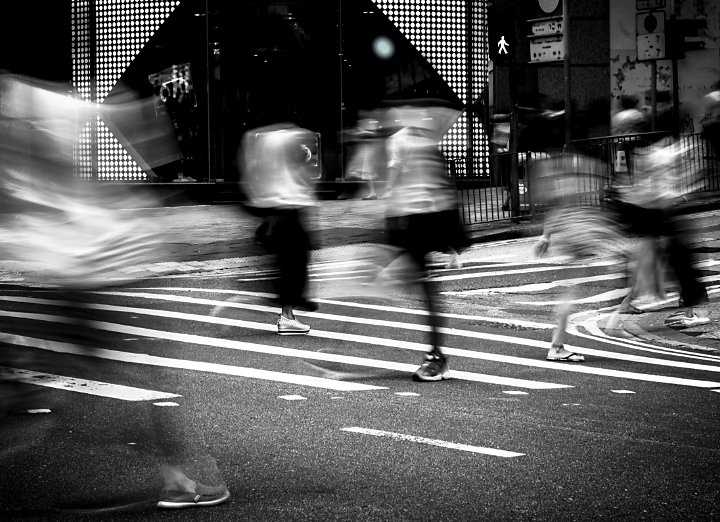Street Photographers Can Be Fun For Everyone
Table of ContentsThe Only Guide to Street Photographers4 Simple Techniques For Street PhotographersStreet Photographers - The FactsThe Best Strategy To Use For Street PhotographersThe 5-Second Trick For Street Photographers
A genre of photography that records day-to-day life in a public place. The actual publicness of the setup enables the professional photographer to take honest pictures of strangers, typically without their understanding. Street digital photographers do not always have a social purpose in mind, but they like to isolate and capture moments which may or else go unnoticed (Street Photographers).He was influenced by numerous of those that influenced the street photographers of the 1950s and '60s, he was not primarily interested in recording the spirit of the street. The impulse to visually record individuals in public began with 19th-century painters such as Edgar Degas, douard Manet, and Henri de Toulouse-Lautrec, that worked side by side with digital photographers attempting to capture the significance of city life.
Due to the somewhat primitive innovation readily available to him and the long direct exposure time called for, he had a hard time to record the hustle and bustle of the Paris roads. He explored with a series of photo techniques, attempting to find one that would certainly enable him to record activity without a blur, and he located some success with the calotype, patented in 1841 by William Henry Fox Talbot. In comparison to Atget, photographer Charles Marville was employed by the city of Paris to create an encyclopaedic file of Haussmann's metropolitan preparation job as it unfolded, thus old and brand-new Paris. While the digital photographers' subject was basically the exact same, the results were markedly different, demonstrating the effect of the digital photographer's intent on the character of the photos he produced.
Given the fine quality of his pictures and the breadth of material, engineers and musicians frequently acquired Atget's prints to make use of as referral for their own work, though industrial passions were rarely his major motivation. Instead, he was driven to photo every last remnant of the Paris he liked. The mingled interest and necessity of his goal luster through, causing photographs that narrate his own experience of the city, top qualities that expected road digital photography of the 20th century.
Some Known Facts About Street Photographers.
They expose the city with his eyes. His work and basic understanding of digital photography as an art type functioned as motivation to generations of photographers that followed. The future generation of see this site road digital photographers, though they likely did not describe themselves thus, was ushered in by the photojournalism of Hungarian-born photographer Andr Kertsz.
Unlike his peers, Brassa made use of a larger-format Voigtlnder electronic camera with a longer direct exposure time, compeling him to be much more calculated and thoughtful in his technique than he might have been if utilizing a Leica.
Cartier-Bresson was a champion of the Leica electronic camera and one of the first photographers to optimize its capabilities. The Leica allowed the digital photographer to connect with the environments and to capture minutes as they took place. Its relatively tiny size additionally helped the digital photographer discolor right into the history, which was Cartier-Bresson's recommended method.
Not known Factual Statements About Street Photographers
It is since of this essential understanding of the art of picture taking that he is typically credited with discovering the medium all over once again approximately a century given that its creation. He took photographs for greater than a half century and influenced generations of digital photographers to trust their eye and instinct in the minute.
These are the questions I will attempt to address: And afterwards I'll leave you with my own interpretation of street digital photography. Yes, we do. Let's kick off with defining what an interpretation is: According to (Street Photographers) it is: "The act of specifying, or of making something precise, distinctive, or clear"
No, most definitely not. The term is both restricting and misinforming. Sounds like a road digital photography ought to be images of a roads right?! And all street photographers, except for a small number of absolute novices, will fully appreciate that a road is not the crucial part to street digital photography, and really if it's an image of a road with possibly a couple of monotonous individuals doing nothing of rate of interest, that's not road digital photography that's a snapshot of a street.
How Street Photographers can Save You Time, Stress, and Money.
He makes a legitimate point don't you think? While I concur with him I'm not certain "candid public photography" will certainly capture on (although I do kind of like the term "honest photography") due to the fact that "road photography" has actually been around for a long time, with numerous masters' names connected to it, so I believe the term is right here to stay (Street Photographers).
You can shoot at the beach, at a festival, in a street, in a park, in a piazza, in a cafe, at a museum or art gallery, in a metro terminal, at an event, on a bridge, under a bridge check my reference ...
Yes, I'm afraid we worried no choice! Without policies we can not have an interpretation, and without an interpretation get redirected here we do not have a category, and without a category we don't have anything to specify what we do, and so we are stuck in a "guidelines meaning genre" loop!
Getting The Street Photographers To Work
